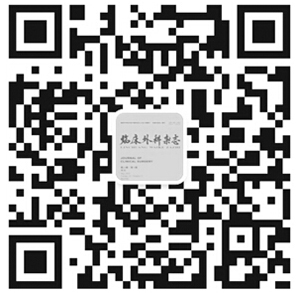|
|
Effect of transanal mucosal flap displacement and transanal intersphincterotomy on the treatment of complex anal fistulas and their influence on the pressure of anorectal canal
XIONG Jian, XIE Huahui, HE Wentao, LI Mingkun, SHEN Ming, ZHANG Renhao, NIU Tianfeng, LUO JING
JOURNAL OF CLINICAL SURGERY. 2024, 32 (1):
62-66.
DOI: 10.3969/j.issn.1005-6483.2024.01.017
Objective To explore the effect of Endoanal advancement flap (ERAF) and transanal opening of interphincteric space (TROPIS) in the treatment of complex anal fistula and their impact on anorectal pressure,so as to provide a reference for clinical selection of surgical methods.Methods Eighty-four patients with complex anal fistula admitted from October 2018 to October 2022 were divided into group E received ERAF treatment (n=48) and group T received TROPIS treatment (n=36).The clinical efficacy,operation,wound surface and anorectal pressure of the two groups were compared.Results The effective rate of treatment in Group T was 97.22%,which was higher than that in Group E(87.50%),with no statistically significant difference (P>0.05).The surgical time [(31.53±7.29) minutes],intraoperative bleeding volume [(29.56±7.37) ml],and wound area [(10.03±0.96) cm2,(8.76±0.87) cm2,(6.20±0.77) cm2] on the day of surgery,7 and 14 days after surgery in Group T were all smaller than those in Group E[(35.36±8.54)min,(36.86±8.04)ml,(12.09±1.23)cm2,(10.52±1.09)cm2 and(7.36±0.85)cm2] (P<0.05).After surgery,the VAS score and Wexner incontinence score of Group T were (1.38±0.27) and (0.21±0.08),respectively.Group E was (1.56±0.29) and (0.33±0.09),respectively.In group T, the anorectal systolic pressure at 20mm and 30mm and the anorectal resting pressure at 20mm and 30mm were(138.18±29.58) mmHg,(136.22±35.41) mmHg,(35.47±6.58) mmHg,and (32.97±8.01) mmHg,respectively.In Group E, the data was (152.78±31.53) mmHg,(156.29±32.74) mmHg,(38.29±7.62) mmHg and (36.41±7.63) mmHg,respectively.Both groups showed a decrease in score and anorectal pressure,and group T was lower than group E (P<0.05).The incidence of adverse reactions in Group E was 20.83% ,which was higher than that in Group T(11.11%),but the difference was not statistically significant (P>0.05).Conclusion TROPIS has a better effect in the treatment of complex anal fistula,which can shorten the operation time,reduce intraoperative bleeding,reduce postoperative pain,and protect anal function.
Related Articles |
Metrics
|

 Table of Content
Table of Content
 Table of Content
Table of Content